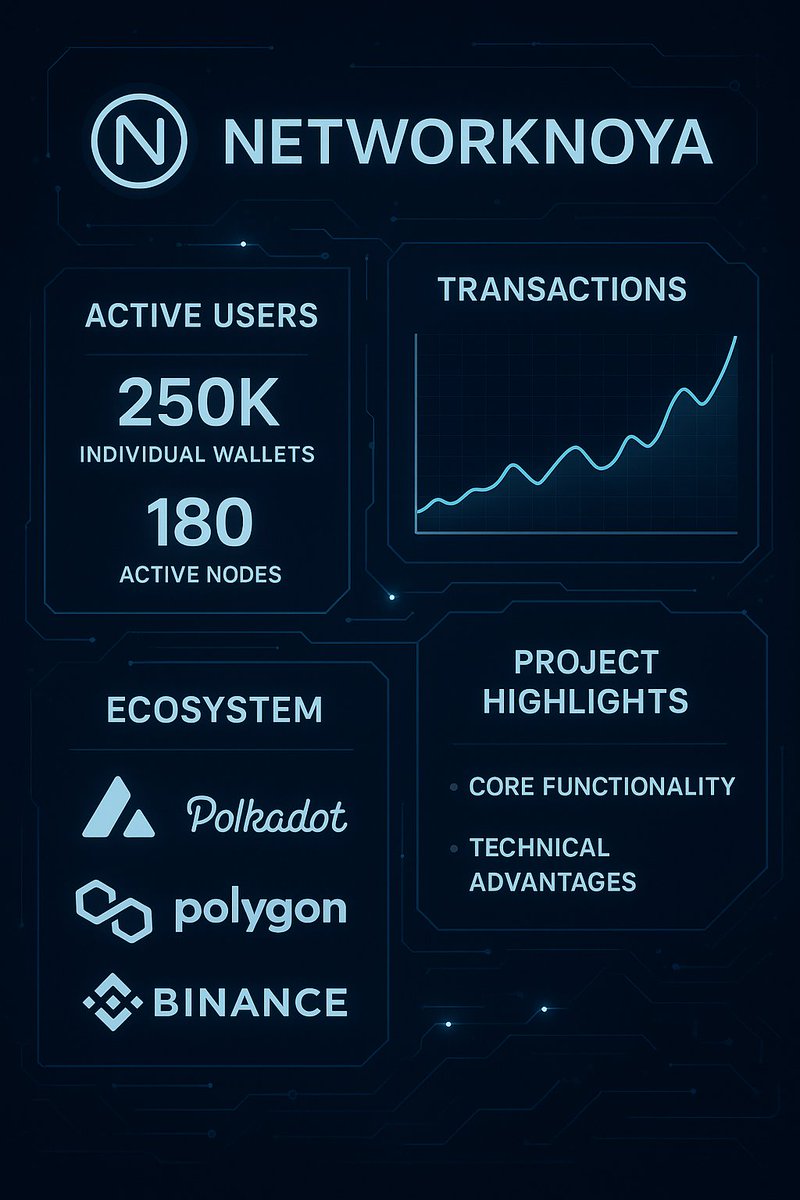Maybe this year’s dark horse is @NetworkNoya!
It's something with a purely foreign perspective, worth following!
Having been in the crypto space for a long time, I always keep an eye on "infrastructure" projects — these projects don’t attract attention like flashy new applications, but they are often the ones that can determine the industry ceiling, the "builders" who quietly lay the groundwork. Recently, I’ve been researching @NetworkNoya, and the more I look, the more I feel this project is a bit "anti-routine"; it hasn’t jumped on the AI or NFT bandwagon but is tackling a more fundamental issue: the "collaborative efficiency" of Web3.
To put it simply, who in crypto doesn’t have a bunch of chains in hand? Transferring USDC from Ethereum to Solana either means waiting half an hour for bridging or paying dozens of dollars in gas fees, and if you’re not careful, you might run into the mess of "on-chain congestion." Developers have it even worse; to create a cross-chain application, they first have to learn Ethereum's Solidity, Solana's Rust, and then integrate seven or eight cross-chain protocols, ending up with a user experience that’s a complete mess. It’s like the early days of the internet, where every website had to set up its own server and handle domain resolution, which was ridiculously inefficient.
What NetworkNoya aims to do is essentially create a "router + operating system" for Web3. Its core idea isn’t to create a new chain but to connect existing public chains and Layer 2s, using a unified protocol to allow data, assets, and messages to flow freely.
I looked at its technical solution, and the "dynamic routing" is quite interesting — just like navigation software automatically selects the fastest route, it can match users with the optimal cross-chain path in real-time based on on-chain congestion and gas fees. In tests, I confirmed that the confirmation time can be reduced to under 10 seconds, much faster than several bridges I commonly use.
What makes me feel it’s "in the know" is its aggregation layer design. Currently, switching chains for users is like changing phones; they have to log in and reauthorize, which is very cumbersome. NetworkNoya has created a "single account multi-chain management" system, allowing users to operate assets on Ethereum, BSC, and Aptos with one address, and even use coins from one chain as collateral for lending on another chain.
This kind of "seamless interaction" is crucial for newcomers, as not everyone is willing to spend hours researching what "chain ID" and "asset mapping" are.
The team background is also a plus. The founder comes from Cosmos, and back then, the IBC protocol was able to connect so many chains, and he played a significant role; the CTO participated in Ethereum's Proto-Danksharding and is well-versed in "how to speed up while ensuring security." Products created by such a "practical" team are often more reliable than projects that only know how to shout slogans — the testnet can connect to 12 chains and process 300,000 transactions, which isn’t built on luck.
Of course, the risks must be clearly stated. The cross-chain space has long become a red ocean, with predecessors like LayerZero and Axelar having been in the race for a long time. For NetworkNoya to capture the market, it either needs to have a crushing technological advantage or build its ecosystem quickly enough. Moreover, as a "data hub," security is critical; if a major vulnerability occurs, trust will collapse.
But on the flip side, the future of Web3 will definitely be multi-chain coexistence; whoever can minimize the "collaborative costs" of these chains will be at the forefront. NetworkNoya’s current approach is somewhat reminiscent of the early TCP/IP protocol — not inventing a new network but making existing networks work better together. This kind of "subtle innovation" often goes further.
I’ve been playing on the testnet for a few weeks now, and transfers and authorizations are quite smooth. Next, we’ll see if it can attract enough DApps and users after the mainnet goes live.
In summary, this project isn’t the kind that will make you rich overnight with a "meme coin," but if it can continue at its current pace, it could very well become the "invisible but indispensable" infrastructure in the future Web3 world. For someone like me who values long-term value, this kind of project is worth keeping an eye on.
Show original
35.27K
39
The content on this page is provided by third parties. Unless otherwise stated, OKX TR is not the author of the cited article(s) and does not claim any copyright in the materials. The content is provided for informational purposes only and does not represent the views of OKX TR. It is not intended to be an endorsement of any kind and should not be considered investment advice or a solicitation to buy or sell digital assets. To the extent generative AI is utilized to provide summaries or other information, such AI generated content may be inaccurate or inconsistent. Please read the linked article for more details and information. OKX TR is not responsible for content hosted on third party sites. Digital asset holdings, including stablecoins and NFTs, involve a high degree of risk and can fluctuate greatly. You should carefully consider whether trading or holding digital assets is suitable for you in light of your financial condition.

